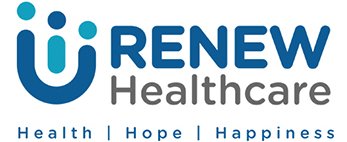What exactly is IVF?
IVF or In Vitro fertilization is a process where sperm fertilizes the eggs in the dish in an IVF laboratory rather than in the fallopian tube of a woman. IVF involves aspirating eggs from the ovaries, then fertilizing them, and then the fertilized embryo is grown in the lab for 5 to 6 days and transferred back in the woman’s uterus through the help of an ultrasound-guided embryo transfer process.
Which is the best IVF Centre in Kolkata? / Clinic
We are a team of highly experienced and dedicated healthcare professionals. Our IVF clinic is equipped with leading-edge technology, and our highly experienced team of fertility specialists is committed to providing personalized and comprehensive care to our patients. We offer a range of services including IVF treatment, gynecology, aesthetic gynecology, and pregnancy care, and that's what makes Renew Health Care Clinic the best IVF centre in Kolkata
What is the cost of IVF in Kolkata?
A very cost-effective IVF treatment is offered by Renew HealthCare Centre in Kolkata ranging from 50,000 INR to 1,50,000 INR depending upon factors like the number of cycles or medications.
Is IVF Successful & Safe?
Yes, IVF being one of the most trusted procedures of fertility treatments is generally very safe and sound. Certain risks may be involved which may not be very different from natural conception.
How long does IVF take?
Varying from patient to patient, one cycle of IVF generally takes between four to six weeks before egg retrieval.
Is infertility limited to female partners only?
Issues of infertility may be generated by both male and female partners equally and some cases of infertility problems might be a combination of both.
What is the count of successful IVF treatments in Kolkata?
Over the last few years, our associates at our IVF Centre in Kolkata have conducted many treatments having a 50% to 65% higher success rate than average in Kolkata depending on the type of IVF treatment done. IVF is a highly useful method of assisted reproduction that can help many couples conceive. By opting for a professional and reputable
What are the limitations of undergoing IVF?
Doctors recommend avoiding drinking, smoking, consumption of supplements, etc during an IVF process.
Are there any side effects of IVF?
Nausea, bloating, cramping, and constipation are among some widespread side effects of IVF.
Is IVF painful?
IVF is generally not a painful technique. Patients may feel uneasy or uncomfortable while undergoing certain stages of the process.
Is IVF done under anesthesia?
Although IVF is not painful, the process may be accomplished under anesthesia to avoid the feeling of concern in patients.
How long does it take to conceive after an IVF?
After the process of embryo transfer is completed, it takes about 10-14 days for pregnancy to happen.
